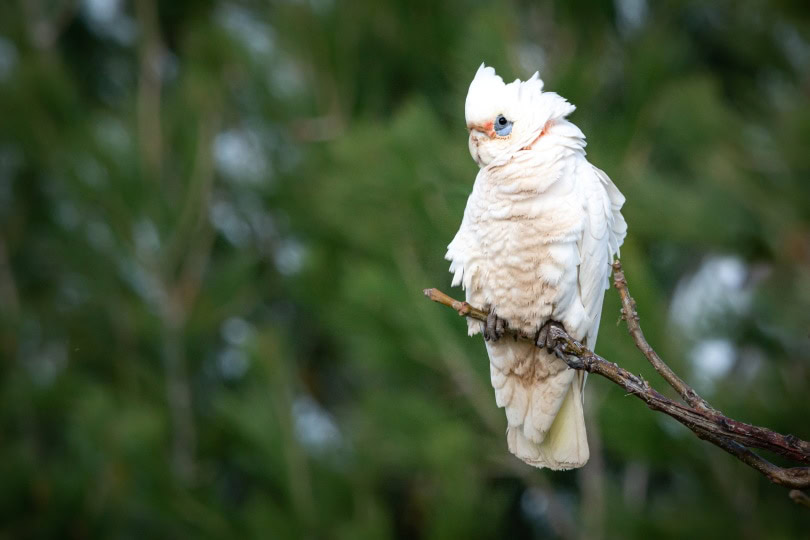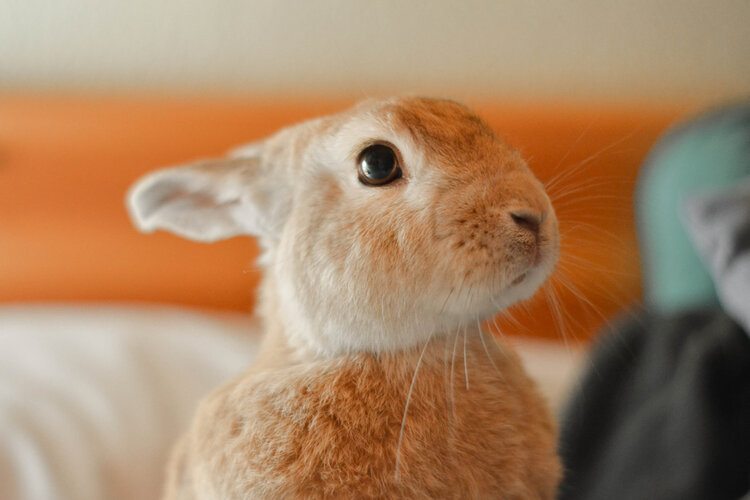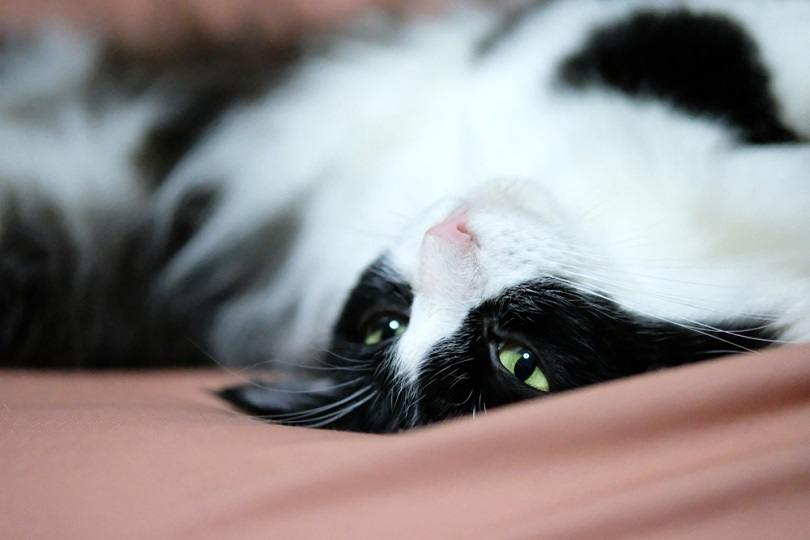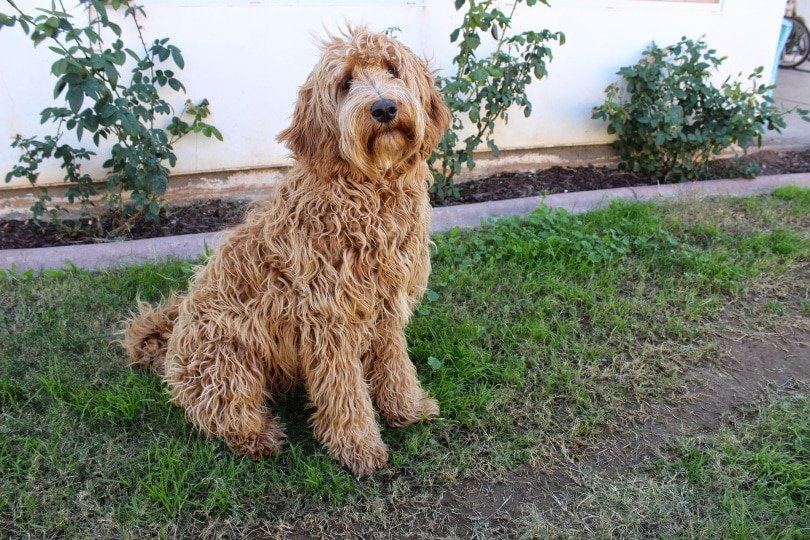Click to Skip Ahead
In the avian world, cockatoos tend to steal the show, being among the most striking, active birds of all time. Ever since cockatoos started being kept as pets, breeders have worked diligently to try to create different variations.
Certain qualities can show up in cockatoos, including having blue eyes—but not in the way that you might think. It’s not their irises that are blue, but rather the skin around their eyes. The contrast of baby blue on their white feathers is stunning, so it’s no wonder that this variant is sought after by bird lovers all over. Read on as we tell you all that there is to know about the Blue-Eyed Cockatoo.

Species Overview
| Common Names | Blue-Eyed Cockatoo, cockatoo |
| Scientific Name | Cacatua ophthalmica |
| Adult Size | 20 inches |
| Life Expectancy | 50 years |
Origin and History
In the 1900s, it became increasingly popular in European countries for people to own parrot species. Many people found the companionship that they had with these tropical birds to be unparalleled.
Due to the cockatoo’s silly and strong-willed personality, they quickly became favorites. Also, they are beautiful birds. They have an interesting crest of head feathers and snow-white coloration with plumes of yellow—what’s not to love?
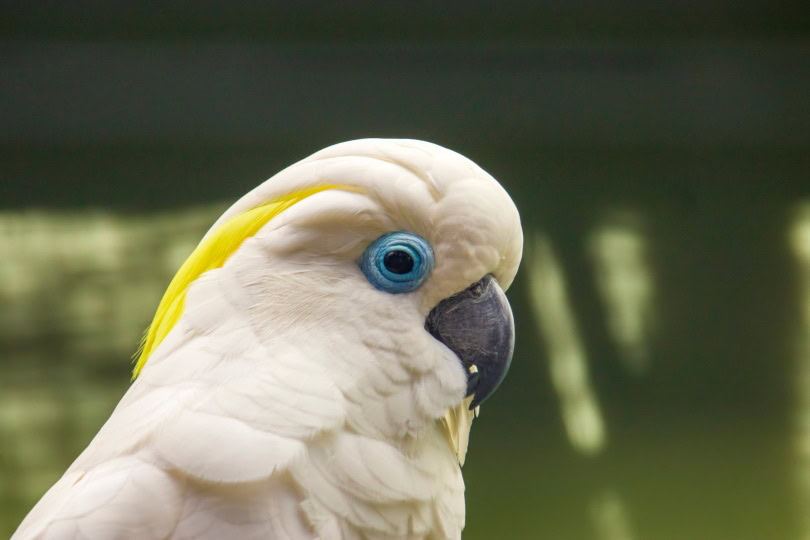
Specifically, the Blue-Eyed Cockatoo comes from areas of New Britain and New Ireland in the West Pacific Ocean. They thrive in humid subtropical forests and can be found in small groups or pairs.
They are rare in the avian pet trade, making them worth a pretty penny. You might have to scour nearby areas for one of these magnificent creatures and be prepared to pony up the dough when you do.
Blue-Eyed Cockatoo Colors and Markings
When you think of the term Blue-Eyed Cockatoo, you might think that their name refers to the actual iris of the eye. Instead, Blue-Eyed Cockatoos have vibrant blue rings around the outside of their eyes.
Aside from their fascinating eye color, these cockatoos look like their cousins, with white feathering and yellow crests.
Where to Adopt or Buy a Blue-Eyed Cockatoo
If you’re looking for a Blue-Eyed Cockatoo, you have a few options.
Breeders
Buying a Blue-Eyed Cockatoo can get quite pricey if you buy one from a breeder. They are extremely rare, and the likelihood that you will have to travel is high, depending on where you live.
If you are lucky enough to find one, you can expect to pay upward of $10,000 per bird.
- Related Read: Do Cockatoos Make Good Pets?
Pet Shops
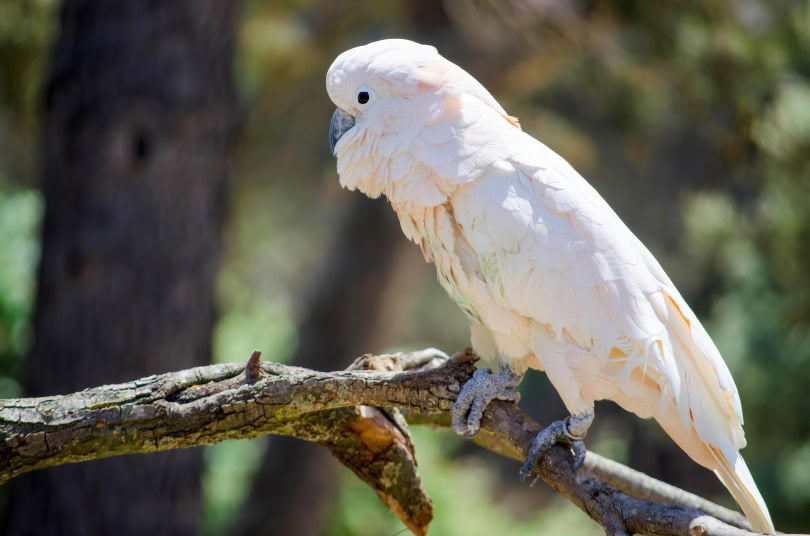
Pet shops charge almost as much as breeders. You might not have as much success finding a Blue-Eyed Cockatoo through a pet store. However, it is possible.
If you do find a Blue-Eyed Cockatoo at a pet shop, you will likely see fees between $5,000 and $10,000.
Private Sales
Cockatoos live for a long time, up to 50 years or so. If their owner dies or another life circumstance prevents the person from caring for their Blue-Eyed Cockatoo any further, private sales are possible.
You might pay less for a previously owned bird, depending on the age. It’s hard to pinpoint a price, since this is dependent on the seller. However, generally, these sales come with cages included and can ultimately cost a lot less money than from a breeder. On average, you are looking at prices between $5,000 and $6,000.
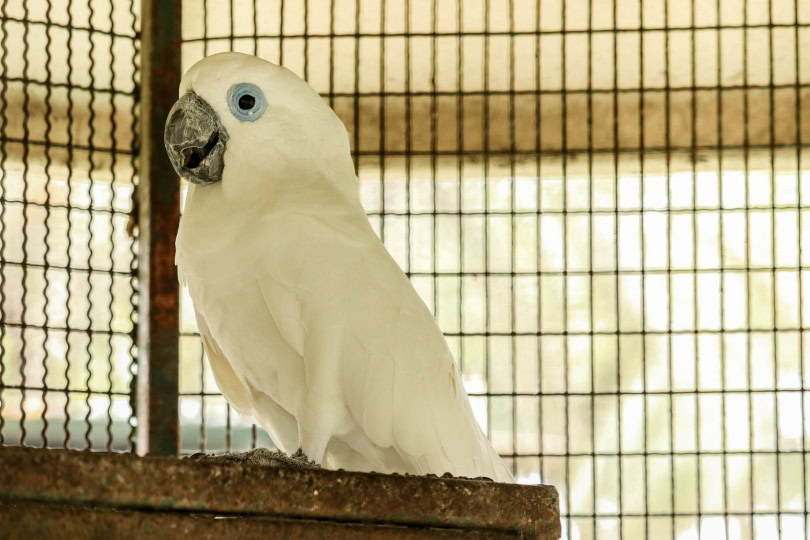
Adoption
Unforeseen circumstances happen constantly. If a Blue-Eyed Cockatoo is ever surrendered or rescued from an unfavorable situation, you might be able to adopt them from a shelter or rescue.
These birds will have had all the necessary vet care if this is the case, so you will have a good idea of any recurring medications or health issues that they might face. If you adopt one this way, you can expect to pay under $500 for the total adoption costs.

Final Thoughts
If you have the financial means to purchase a Blue-Eyed Cockatoo, they can be an incredibly rewarding pet. Although they are high maintenance and require lots of attention, they will fill your life with lots of laughter and happiness.
Keep in mind that the bird’s actual iris is not blue; instead, it’s the ring around each eye that holds that special color. Blue eyes in cockatoos are not possible.
- See also: Why Do Parrots Talk?
Featured Image Credit: Steven Giles, Shutterstock
